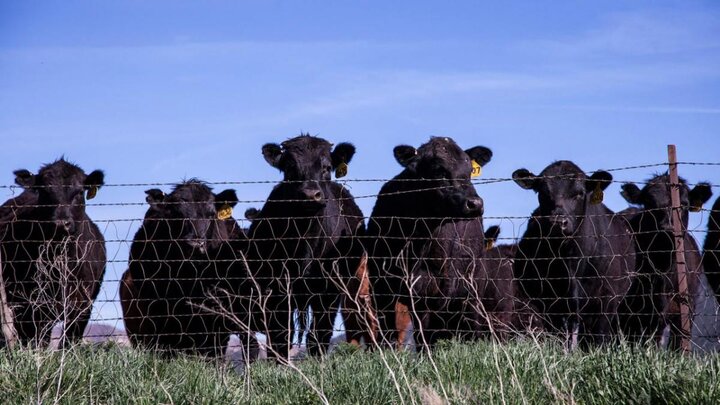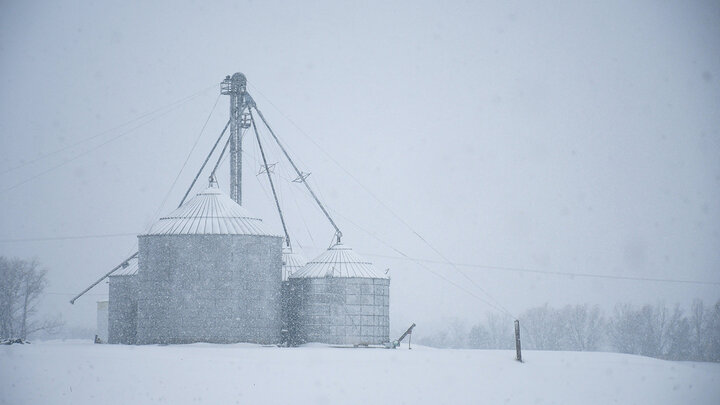This article was first published by the Nebraska Cattleman magazine.
Why do we trade?
The concept of comparative advantage is central to agricultural trade. In short, comparative advantage for a given product states that I can produce and deliver this product to a location cheaper than anyone else. It is a measure of competitiveness. For example, the US has a comparative advantage in producing grain-finished beef. Technology, infrastructure, and location define this comparative advantage. Thus, “open” or “free trade” allows products to flow from cheaply produced to more expensive locations. People producing the same product compete to deliver the products to market and consumers benefit by spending less money purchasing products. Barriers to trade, such as tariffs, border taxes, sanitary and phytosanitary (SPS) restrictions, increase the cost to deliver products, change country’s comparative advantage, and divert trade flows.
Over the last 10 years, U.S. beef production has increased 2%. Domestic beef demand increased 17% from 2010 to 2015 by but has been declined by 4% since 2015. With more beef available to the market and static to declining beef demand why have prices for feeder and fed cattle not fallen? In two words: export demand. Figure 1 shows that monthly beef exports demand (NOT per capita consumption since per capita consumption is NOT demand) has grown significantly since 2010. Beef export demand has outpaced both pork and broiler export demand. Current export demand is compared (i.e., indexed) to 2010. Figure 1 is read as “If the US had the same export demand in 2018 that we had in 2010 we would have exported 125% less beef”. Other year-to-year and cross-species comparisons could be made. In short, beef export demand has grown significantly which has supported U.S. feeder and fed cattle prices.
Trade is vital to Nebraska
The Nebraska economy is a key benefactor from agriculture trade. Table 1 shows how the export value of different agriculture products originating from Nebraska have increased over time and how Nebraska compares to other states. Total value of exported agriculture products increased from nearly 2.3 billion dollars to almost 2.9 billion dollars from 2000 to 2015. In 2018, exports fell largely due to increased trade policy uncertainty and potentially expiring trade agreements. Nebraska is a competitive exporter of several products. For example, beef exports increased from 437.9 million dollars to 1,318.5 million dollars during the same period. Nebraska was the number one beef exporter in the U.S. in 2018. The reduction in export value in 2005 was due to the BSE scare where beef trade was effectively shut down. Similar stories exist for other commodities such as pork, corn, soybeans, and dry beans.
As Nebraska strives to increase beef production, ensuring adequate export market creation or intensification of existing exports remains vital. The U.S. made significant progress in both opening new markets and increasing market penetration in existing markets for beef. First, in August 2019 the EU agreed to increase the share of hormone-free beef to the U.S. Prior to this agreement, the U.S. competed with other countries for its share of the EU’s 45,000 metric tons quota (i.e., maximum amount of beef allowed under a low tariff). The new agreement stipulates that the U.S. will receive 35,000 metric tons out of the 45,000-ton quota. This change will be implemented over 7 years. Second and more importantly, a U.S.-Japan mini agreement was reached in September 2019. The agreement partially offsets the major loss of competitiveness of U.S. agriculture in the Asian pacific region induced by exiting the Trans Pacific Partnership (TPP) negotiations in early 2017. The other eleven TPP countries signed the Comprehensive and Progressive TPP (CPTPP) in 2018 through which Australia, Canada, and New Zealand gained privileged access to Japan. The new mini agreement gives U.S. beef the same tariff advantage as those provided to CPTPP members like Australia, Canada, and New Zealand. In particular, tariffs at the border on U.S. beef (fresh, chilled and frozen) will be reduced to 9% over 15 years from their current 38.5%. Tariffs on processed beef products will be eliminated over the same period but does have safeguard measures in place to readjust the tariff rate if trade is significantly disruptive to the Japanese economy. In short, this agreement helps the US recover some of the loss of competitiveness after the CPTPP was signed.
Economic Impacts of New Trade Agreements
While both trade agreements were lauded as success for U.S. agriculture and beef in particular, they each will have differing impacts on Nebraska. The EU quota expansion is effectively a “zero sum game” where different countries will play a game of trade “musical chairs”. No new net trade opportunities will be created since the aggregate quota remains at its 2009 level. U.S. exports to the EU will just displace other exporters’ supplies, but globally one would expect little effect from this agreement. However, the agreement will reduce some uncertainty for U.S. hormone-free beef exporters who still have to compete for price in the EU market place. No U.S. price movement should be expected from this trade development.
Earlier studies of TPP and of the Japan-Australia partnership agreement showed that U.S. beef exports to Japan could increase by about 50% upon completion of the 15-year implementation of TPP, relative to the projected levels in a baseline scenario without TPP. Yet the projected impact on U.S. beef production is relatively small, at about 1% of U.S. beef production. Value creation was estimated at 839 million dollars. In 2017, beef export to Japan were valued at about 1.9 billion dollars. A 50% increase based on that figure would be 950 million dollars. However, the actual impact on the beef industry will be seen over the next 15 years (USDA GAIN 2019).
Looking Forward in Trade
Beyond market access through lower tariffs and expanded quota, a host of issues remains to be resolved on SPS regulations, border procedures, and other policies affecting beef trade. For example, trade partners have different policies on veterinary drugs uses and residues present in meat. These issues are difficult to resolve. They are typically resolved through more extensive trade agreements such as a TPP or the lingering EU-US partnership agreement (Transatlantic Trade and Investment Partnership or TTIP). However, looking forward beef producers should expect trade agreements that offer short-term gains through market access rather than on resolution of trade frictions such as SPS or veterinary drug regulations.
| Category | Value ($ millions) | State Ranking in 2018 | ||||
|---|---|---|---|---|---|---|
| 2000 | 2005 | 2010 | 2015 | 2018 | ||
| Total Ag Exports | 2,298.6 | 2,429.0 | 2,484.5 | 2,854.4 | 2,347.1 | 6 |
| Total Animal Exports | 709.5 | 555.9 | 1,126.8 | 1,654.8 | 1,848.4 | 4 |
| Beef | 437.9 | 183.1 | 564.5 | 1,020.7 | 1,318.5 | 1 |
| Pork | 78.1 | 134.4 | 215.8 | 212.1 | 246.8 | 7 |
| Chicken | 0.7 | 1.2 | 1.6 | 1.9 | 1.9 | 27 |
| Dairy | 6.9 | 10.0 | 23.6 | 33.9 | 36.2 | 25 |
| Other Poultry | 11.8 | 14.9 | 27.3 | 31.0 | 30.6 | 18 |
| Total Plant Exports | 1,589.1 | 1,936.3 | 4,208.2 | 4,824.5 | 4,953.9 | 5 |
| Corn | 507.6 | 535.7 | 1,131.4 | 1,010.0 | 1,476.6 | 3 |
| Feeds | 304.5 | 314.1 | 687.2 | 1,139.4 | 950.8 | 3 |
| Processed Grain | 118.3 | 180.0 | 310.8 | 387.6 | 380.6 | 3 |
| Soybean | 346.6 | 467.9 | 1,248.9 | 1,367.5 | 1,218.7 | 5 |
| Soybean Meal | 84.1 | 111.0 | 235.9 | 347.7 | 364.6 | 5 |
| Vegetable Oils | 71.0 | 107.8 | 241.1 | 202.6 | 186.8 | 5 |




